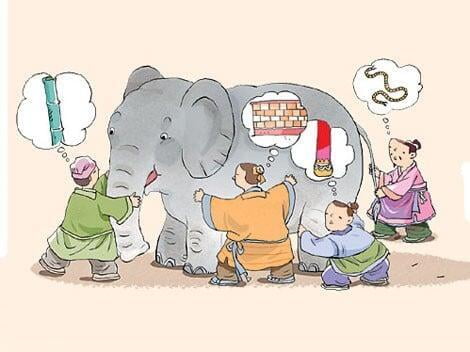Guest Blog Excerpt: Mapping Organizational Ecosystems: Introduction

Original Article by Daniel Hulter
Author Daniel Hulter relates innovation in the defense community to a Chinese Idiom about four blind men standing around an elephant, trying to come up with a way to describe the nature of the animal.
“Recently, I ran a little experiment with 36 people from across and beyond the defense innovation community, exploring some ideas and information that maps of our organizational landscape don’t tend to capture, and experimenting with some facilitated, collaborative, intersubjective mapping exercises that might get after what is missing. I had harbored this sense for a number of years that maps of our organizational landscape weren’t ever enough. They didn’t ever seem useful or accurate, despite how much time and care was placed in their creation.
...
This was the origin of my impression that the roles that organizations play in the innovation ecosystem are not simple or fixed or even singular. They vary from observer to observer. I have experienced significant frustration with the way that organizations describe themselves or are described to me by others, and how it often strikes me as incomplete, or worse, wholly inaccurate. We’re looking at these organizations from different angles, from entirely different positions, and our perceptions of value or structure are significantly distorted by those differences. You might think it would help to just believe organizations when they say their function is one thing, but I’ve found that marketing often outpaces actual value, and sometimes organizations aren’t even aware that they’re providing a significant type of value to a particular type of user or entity.
There’s this Chinese Idiom you might have heard, about four blind men standing around an elephant, trying to come up with a way to describe the nature of the animal. One is feeling the trunk and tells the others that an elephant is like a stalk of bamboo. Another feels the side and says that an elephant is like a wall. The third feels the leg and tells the others an elephant is like the trunk of a tree. The fourth feels the tail and says the elephant is like a rope. The meaning of the story is that we all just have a piece of the puzzle, and no singular viewpoint, being too narrow, is capable of capturing the whole picture in all its complexity.
As a facilitator, I’m fairly certain I could come up with an effective approach to help the four blind men come to agreement about what an elephant is. One of the most important functions a facilitator serves is to bring diverse perspectives to an equal volume and help them negotiate a common picture until a useful consent or coherence is achieved.
But I’d argue our task with organizational ecosystem mapping is even more difficult than this, because we’re not just faced with determining the static nature of one unchanging animal. There are a large number of animals, of various types, and each animal we’re seeking to grasp fully is evolving at such a rapid pace that by the time we’ve documented all its body parts, what once was skin became scales, then feathers and now wings; and what we actually documented is now a defunct historical snapshot as we move on to the next animal.
…
Click the link below to read the full article.
LinkedIn Daniel Hulter: https://www.linkedin.com/in/danielhulter/
